

Zaklinanie (Incantation) Ici-bas tous les lilas meurent. C'est moi. Buria (L'Orage) En mer. Allein (Seul) Indécision. Sinitsa (Mésange) Scène d'Hermione. Die Sterne (Les Étoiles) Utës (La Falaise) Le Chêne et le roseau. Berceuse. L'Absence. Dve rozy (Deux roses) Pauline Viardot. Un article de Wikipédia, l'encyclopédie libre.
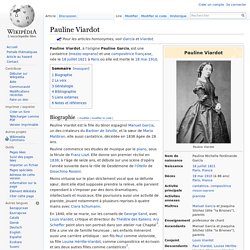
Séparation. Douze mélodies. Aime-moi. 6 Morceaux pour piano et violon. Lamento. Fleur Desséchée. Madrid. Les Bohémiennes. Havanaise. Bohémienne. Hai luli. Sonatine pour violon et piano. Romance pour piano et violon. Berceuse cosaque. Pauline Viardot : femme et artiste. Cendrillon (extraits) This post was kindly contributed by Andrea Cawelti, Ward Project Music Cataloger at Houghton: Pauline Garcia Viardot (1821-1910) was one of the 19th century’s most versatile and influential opera stars.

Born into an operatic family (her father Manuel Garcia created the role of Almaviva in Rossini’s Il Barbiere di Siviglia, later becoming a renowned voice teacher; her sister Maria Malibran created the title role in Donizetti’s Maria Stuarda among others, and was famous for her temperament on and off the stage; her brother Manuel taught singing at the Paris Conservatory and went on to found his own school of singing based on his father’s, producing such pupils as Jenny Lind, Charles Santley, and Mathilde Marchesi) Viardot herself became a celebrated mezzo-soprano, composer, and voice teacher.
Fervently admired by many composers including Meyerbeer and Gounod, Berlioz described her as one of the greatest artists in the history of music. . *2011M-3. Images: Winter-Spring 2008 Catalog, Lot 161.

Viardot, Pauline. (1821-1910). Important letter, mentioning the upcoming Berlioz Gluck revival. 3 pages, dated March 23, 1858. Addressed to Mr. Mason, translated from the French in part: "Whatever may come, I shall do my best not to miss the Festival at Birmingman, as I have a too intense desire to attend again your delightful musical festivals and to create an important role of Oratorio and will sacrifice everything to that desire....I have been offered the leading role in another festival at Baden for Sept 3rd under the direction of Berlioz, still leaving me to my own terms as on another occasion.
" Pauline Viardot, one of the most important singers of the 19th century, was the dedicatee of Brahms’ Alto Rhapdody and Saint-Saens wrote that it was her voice he had in mind when composing the role of Dalila. Sold. Pauline Viardot-Garcia (1821 – 1910) at the age of 20Steel engraving, around 1840Robert-Schumann-Haus Zwickau Schumann heard the singer, who was a close friend of George Sand, and a sister of the equally famous Malibran, for the first time on 25 June 1838 in Leipzig and was very touched by her singing.
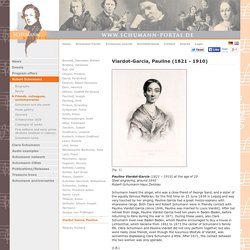
Pauline Garcia had a great mezzo-soprano with impressive range. Pauline Viardot (1821 - 1910) Portrait de Pauline Viardot par Ary Scheffer – Musée de la Vie Romantique - Paris Une personnalité exceptionnelle se cache derrière ce nom aujourd’hui si peu connu, autrefois si célèbre.
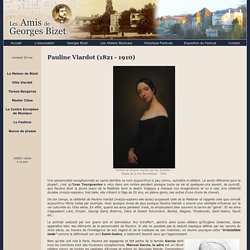
La seule référence pour la plupart, c’est qu'Ivan Tourgueniev a vécu dans son ombre pendant presque toute sa vie et quelques-uns savent, de surcroît, que Pauline était la jeune soeur de la Malibran dont le destin tragique a marqué nos imaginations et lui a valu une célébrité durable (mezzo-soprano, très belle, elle s'éteint à l'âge de 28 ans, en pleine gloire, des suites d’une chute de cheval). De son temps, la célébrité de Pauline Viardot (mezzo-soprano elle aussi) surpassait celle de la Malibran et rappelle celle que connaît aujourd’hui Maria Callas par exemple. Avec quelque chose de plus puisque Pauline Viardot a exercé une véritable influence sur la vie culturelle du XIXe siècle. © archives BNF José Quitin, l'éminent musicologue, déplorait un jour qu'on ait "oublié" de commémorer, en 1969, le 150e anniversaire de la naissance du grand violoniste belge Hubert Léonard.
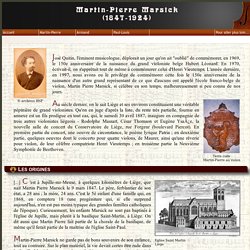
En 1970, écrivait-il, on s'apprêtait tout de même à commémorer celui d'Henri Vieutemps. L'année dernière, en 1997, nous avons eu le privilège de commémorer cette fois le 150e anniversaire de la naissance d'un autre grand représentant de ce que d'aucuns ont appelé l'école franco-belge de violon, Martin Pierre Marsick, si célèbre en son temps, malheureusement si peu connu de nos jours. Terre cuite Martin-Pierre au violon Au siècle dernier, on le sait Liège et ses environs constituaient une véritable pépinière de grand violonistes. Eglise Saint Martin Liège [...] . .: 101 Classics The Best Loved Classical Melodies :. .

Tracklist: CD1 - The Great Waltzes1. Johann Strauss II - An der Schonen Blauen Donau, Op. 3142. Johann Strauss II - Kaiser-Walzer, Op. 4373. Iosif Ivanovici - Valurile Dunarii4. George Sand. Son orgue. “The world has finally found a woman composer of genius”Franz Liszt Pauline García was born July 18 1821 in Paris to the famous singer family.
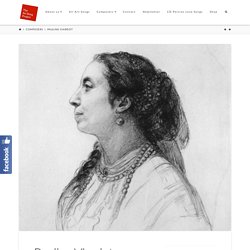
Her father, the spanish tenor, opera composer and singing teacher, Manuel García is still very well known for the book „School of singing“. Her sister was diva Maria Malibran. As a small girl, she travelled with her family to London and New York (where her father, mother, brother and sister gave the first performance of Mozart’s Don Giovanni in the United States). By the age of six she was fluent in Spanish, French, English and Italian, to which she later added German and Russian. She had wanted to become a professional concert pianist, even taking piano lessons with Franz Liszt. At the age of 17, she met and was courted by Alfred de Musset (the poet of the song Madrid above). Maurice Sand, "Chopin giving a piano lesson to Pauline Viardot", drawing (1844); source: Chopin Express No. 08 An essay by Kenneth Hamilton, a concert pianist and author of After the Golden Age: Romantic Pianism and Modern Performance Paris, 1842.
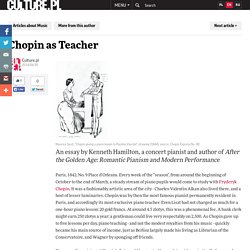
No. 9 Place d'Orleans. Every week of the "season", from around the beginning of October to the end of March, a steady stream of piano pupils would come to study with Fryderyk Chopin. It was a fashionably artistic area of the city - Charles-Valentin Alkan also lived there, and a host of lesser luminaries. Maria Malibran. Contexte historique La cantatrice Maria Malibran est sans doute l’une des plus célèbres chanteuses de l’histoire de l’opéra.
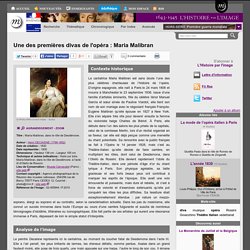
D’origine espagnole, elle naît à Paris le 24 mars 1808 et mourra à Manchester le 23 septembre 1836. Pauline Viardot (1821-1910) French mezzo-soprano and composer of Spanish descent (b. 18 July 1821 in Paris; d. 18 May 1910 in Paris), born Pauline García; also known after her marriage as Pauline Viardot-García. Biography She was the daughter of the notable Spanish tenor, composer, and teacher Manuel García (1775–1832), and the younger sister of the mezzo-soprano María Malibran (1808–1836), whose fascinating personality, vocal technique, and stage presence, as well as her tragically early death, would make her into one of the idols of the Romantic generation. Pauline received music lessons very early on from her father, who was keen for her to become a concert pianist. In fact, this was probably her real vocation and as a girl she had a few memorable piano lessons with Liszt, as well as composition classes with Anton Rejcha. Ivan Tourgueniev. Ivan Sergueïevitch Tourgueniev Publication du groupe « Ebooks libres et gratuits » - Les invités avaient pris congé depuis longtemps.
L’horloge venait de sonner la demie de minuit. Pauline Viardot (1821 - 1910) Pauline Viardot (1821-1910) "Il y a un enfant qui nous effacera tous : c'est ma sœur, qui a dix ans. " Louis Viardot. Pauline Viardot: Centenaire 2010. Consuelo / George Sand.